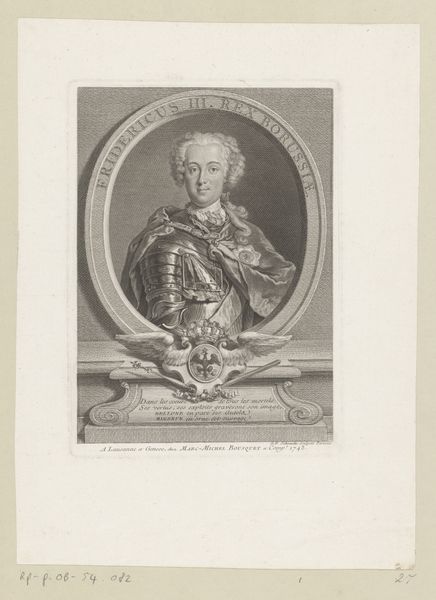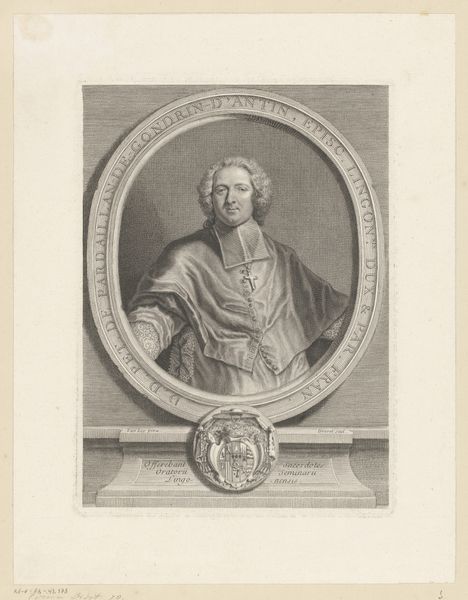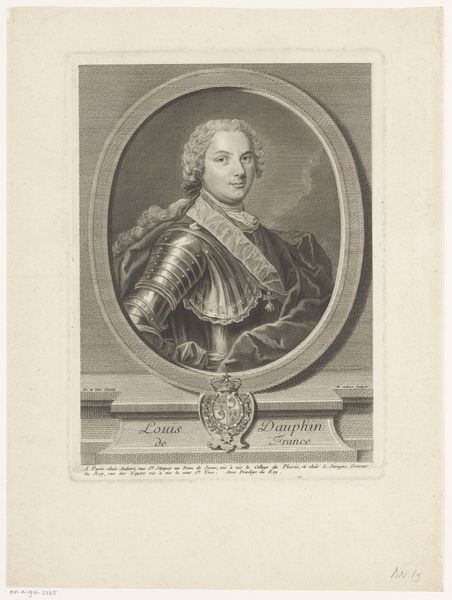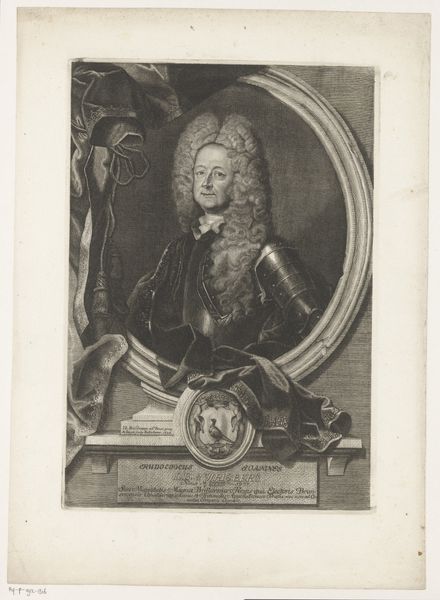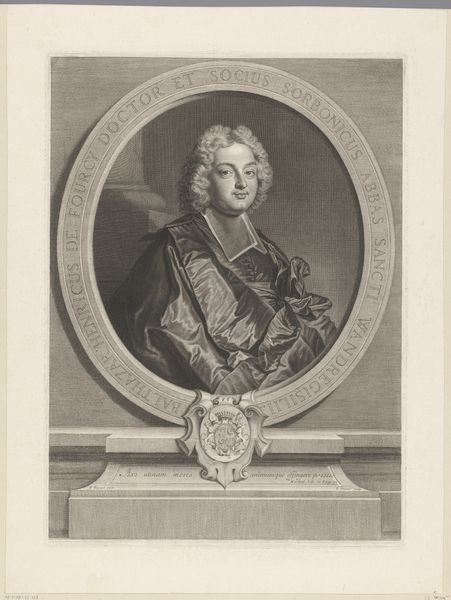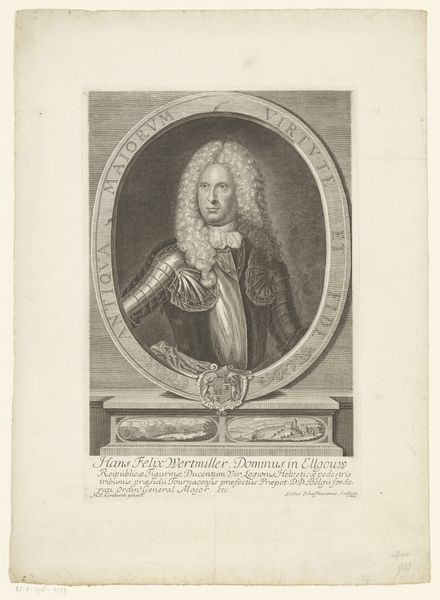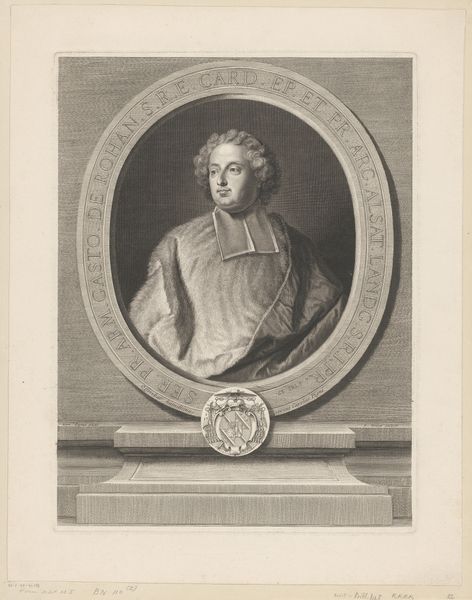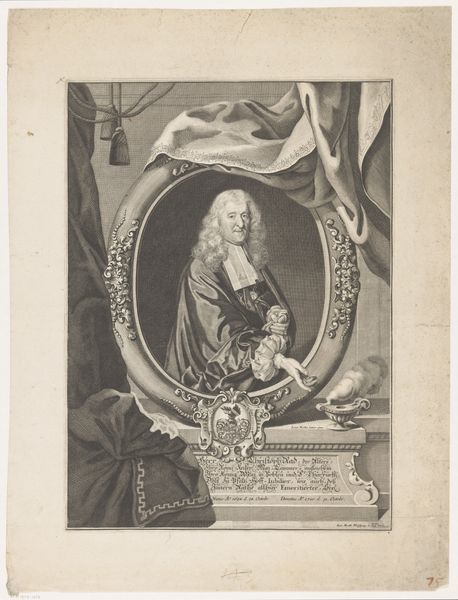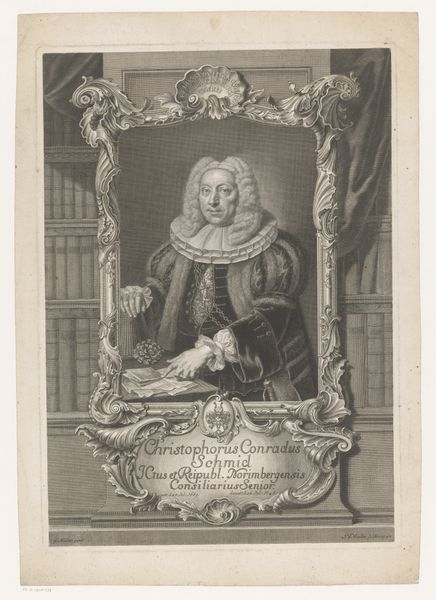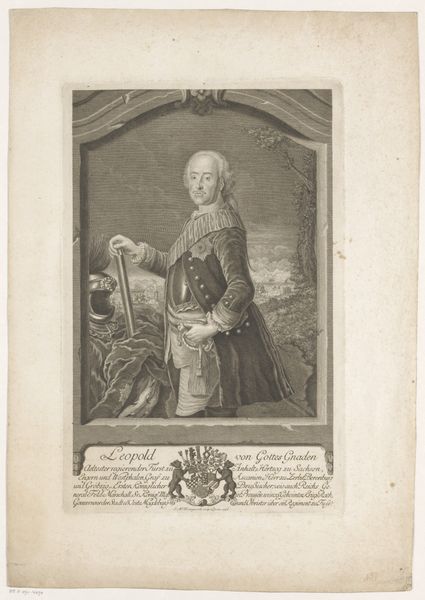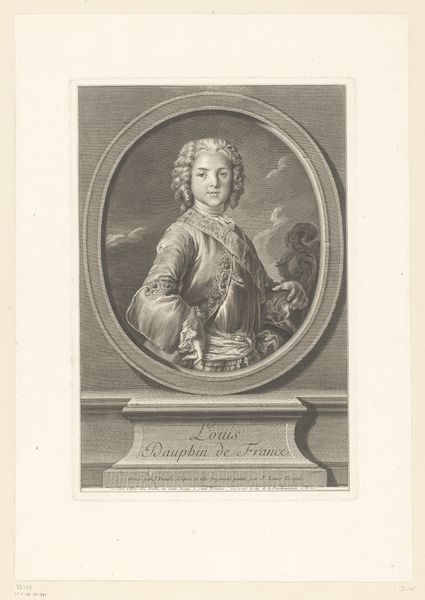
engraving
#
portrait
#
baroque
#
historical photography
#
history-painting
#
engraving
Dimensions: height 397 mm, width 295 mm
Copyright: Rijks Museum: Open Domain
Editor: So, this engraving, "Portret van Willem IV van Oranje-Nassau," dating somewhere between 1726 and 1764, by Jean-Joseph Balechou, strikes me as such a formal depiction. He looks almost theatrical in that armor! What can you tell me about its context? Curator: Well, we need to consider the power of imagery during this era. Engravings like this weren't just portraits; they were tools of state. The armour, the carefully composed scene, the flag – all contribute to crafting a specific image of Willem IV, particularly important as he assumed the hereditary Stadtholderate. Editor: So it’s less about capturing his likeness and more about projecting an image of authority? Curator: Precisely! This engraving serves as propaganda. It reinforces the Orange-Nassau dynasty's power and legitimacy, especially at a time when such things were constantly being questioned and negotiated. Think about who would have commissioned this, how it was distributed, and its intended audience. Editor: The public, presumably? Did people really see these and think, "Yes, this is a powerful ruler"? Curator: Absolutely. Consider that the engraving likely circulated widely. It was more easily reproduced and disseminated than a painting. So, images like this helped shape public perception and legitimized Willem IV's rule. Even details like the baroque ornamentation were important. Baroque art in general was favored for its splendor, projecting a sense of majesty. It's all calculated. Editor: That's fascinating. I had been reading this image through a fine-art lens, but seeing it as a political tool completely changes the picture! It reminds me of today’s heavily staged campaign ads. Curator: Exactly! Think of this as an 18th-century version of that. Examining the politics embedded within art offers a much richer understanding than just appreciating the aesthetic alone, don't you think? Editor: Absolutely! Looking at the purpose and distribution adds another dimension to analyzing artworks. Thanks for the insight.
Comments
No comments
Be the first to comment and join the conversation on the ultimate creative platform.
